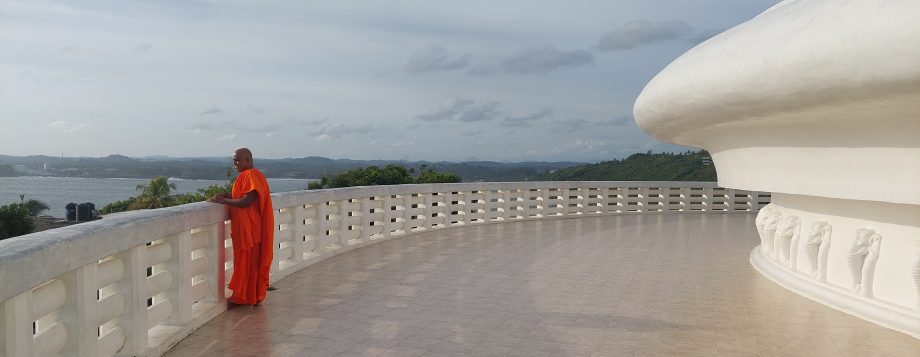And the rainy weather continues in Fes, the spiritual and cultural heart of Morocco. The weather is spoiling things a bit, but I’m trying to make the best of everything anyway.
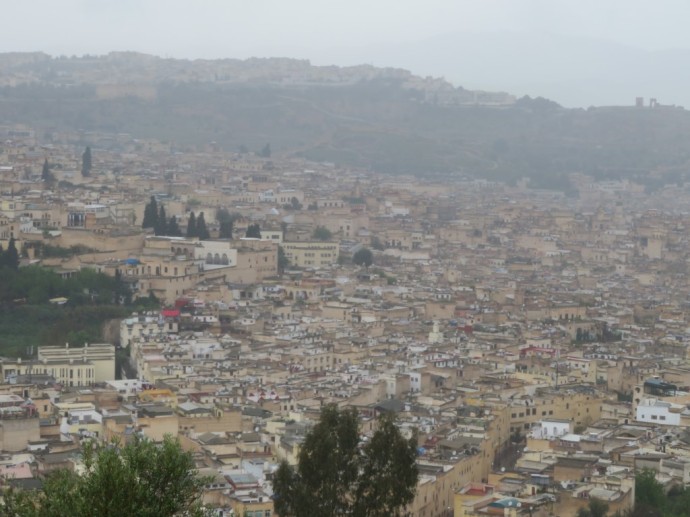
We visited the Royal Palace of Fes, where the golden gates were so impressive, I can’t imagine what the inside would be like!
The medina of Fes is listed as a World Heritage Site and is believed to be one of the world’s largest urban pedestrian zones (car-free areas). Instead you’ll see men pushing trolleys or donkey’s or horses loaded with their wares who yell ‘balak’ or ‘attention’ for you to get out the way. At first I was a bit disappointed that I wouldn’t be free to explore the medina on my own as we needed to stay with the group. But once we entered, I was so relieved to have the guide show us around. With the narrow maze of dark twisting laneways, some barely more than shoulder width I would still be stuck in there for years to come! Leather, copper, ribbon, fabric, sweets, fruits, vegetables, nuts, meat, clothes, everything you can imagine. My mind was boggling.
We watched many different specialised craftsman at work. Weavers making beautiful cloth, potters making tagines and bowls and tilers putting together the most stunningly detailed mosaics you could imagine and I also saw a camel butcher!
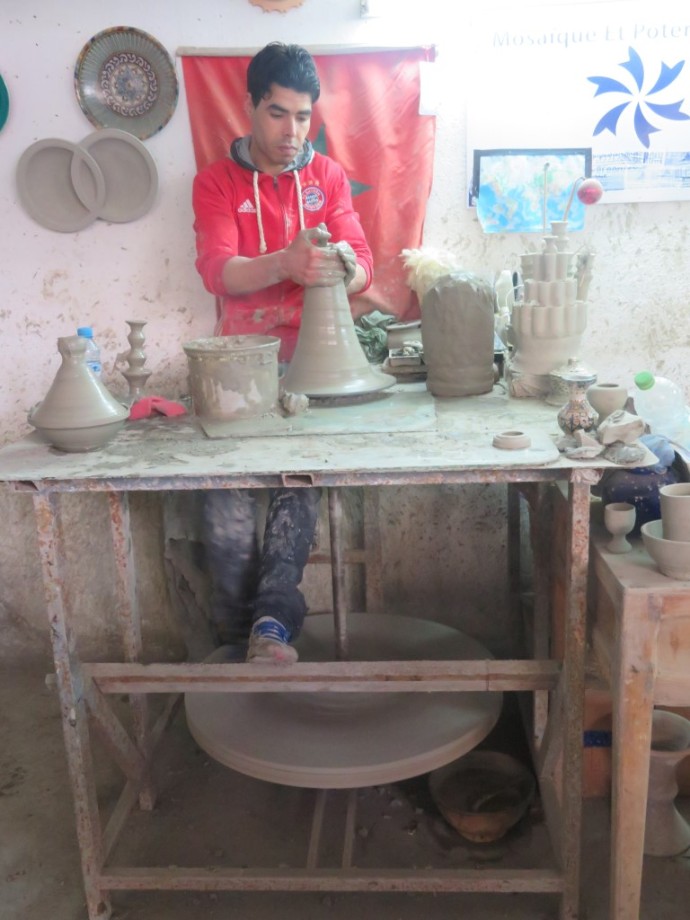
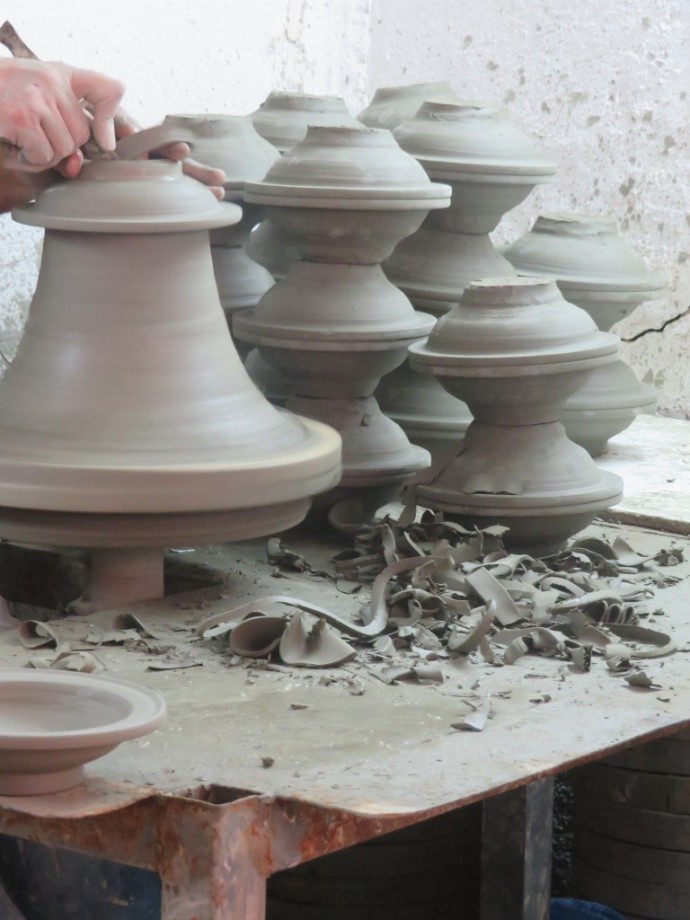

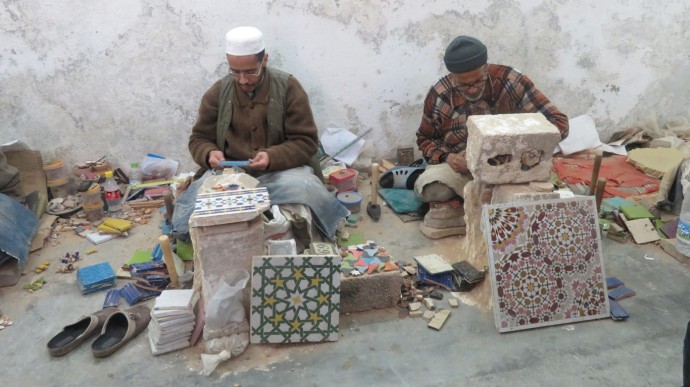
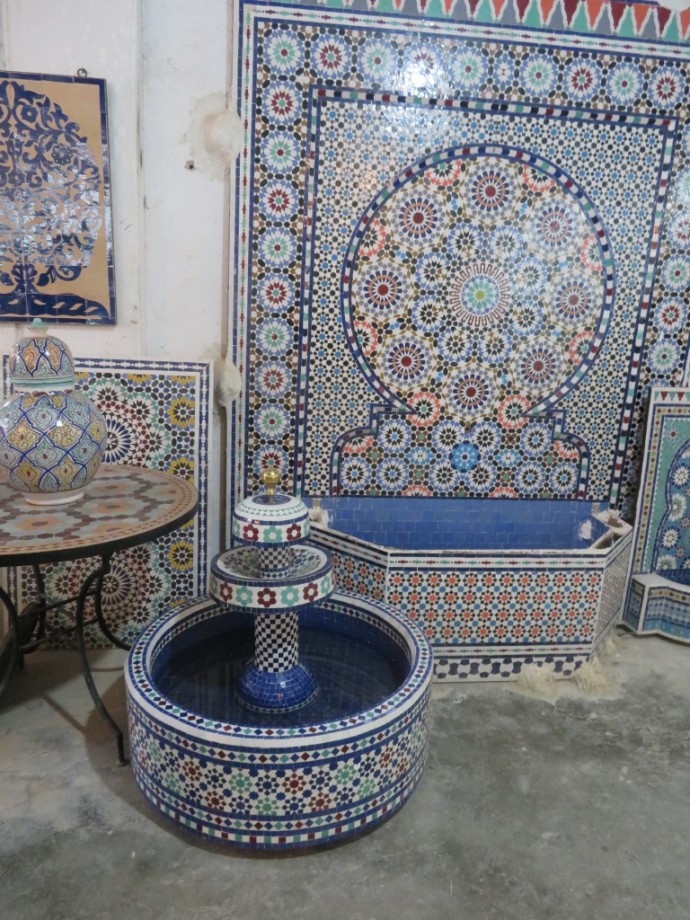
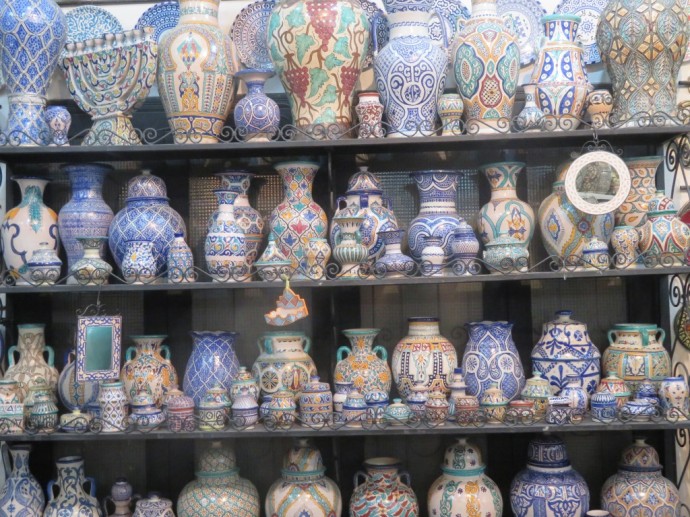
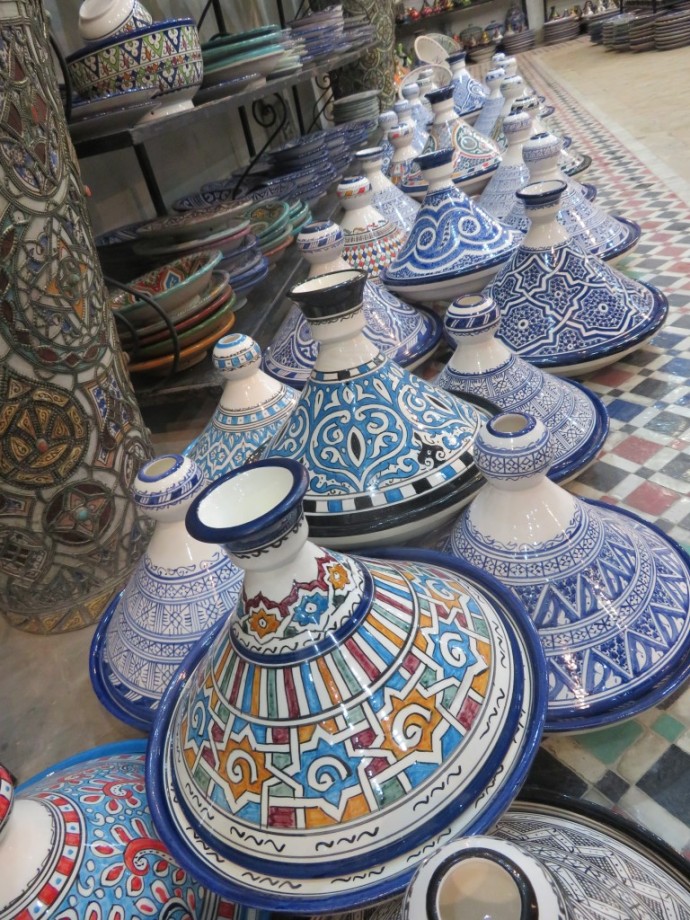
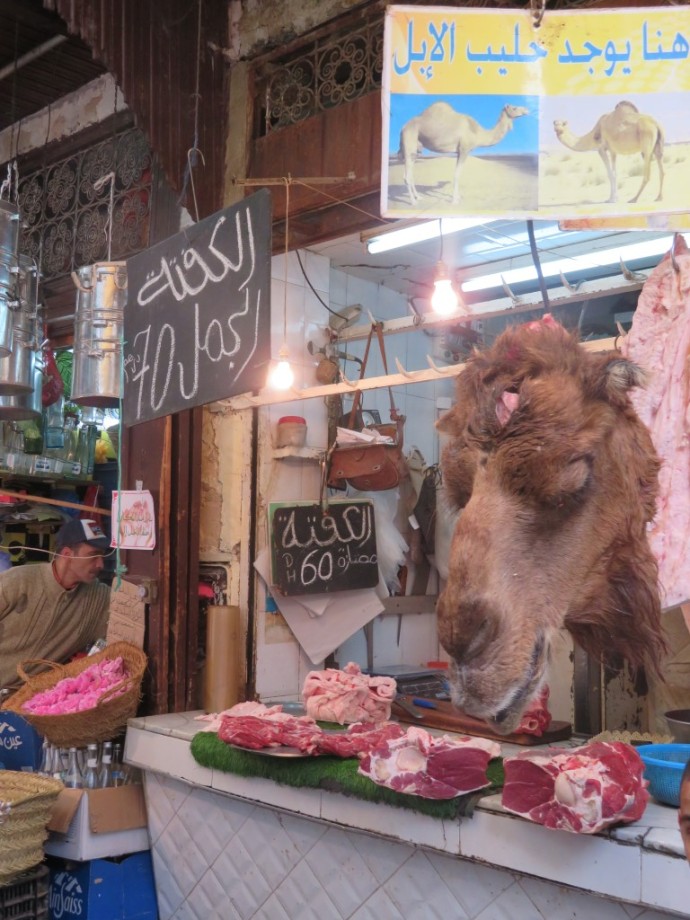
The old city houses the University of Al Quaraouiyine which was founded in 859 and the oldest continuously functioning university in the world. We also visited Attarin Medesa, a former Islamic School.
The Zaouia of Moulay Idriss II is a shrine and religious complex, containing the tomb of Idris II who ruled Morocco from 807 to 828 and is considered the main founder of the city of Fes. For visiting Muslims it’s considered good luck to come to the shrine, and many women believe it will help their fertility. For everyone else, it’s possible to glimpse part of the beautiful interior and tomb from the entrance.
Today for lunch I sampled Chicken Pastilla. I’d describe this as a sweet chicken pie – Delish
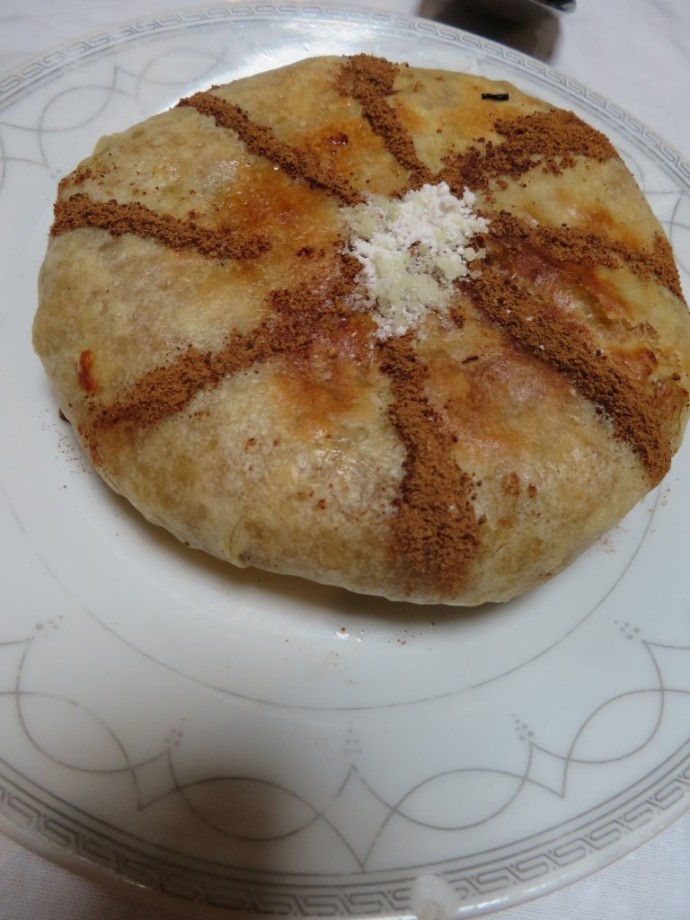
We also visited the Chouara Tannery, one of 3 big tanneries in the city. Since the inception of the city, the tanning industry has been continually operating in the same fashion as it did in the early centuries. The tanneries are packed with the round stone wells filled with dye or white liquids for softening the hides.
In order to break down the tough leather, the hides are soaked into the white liquids made of cow urine, pigeon faeces, lime, salt and water. This process takes two to three days, making the leather malleable for absorbing the dye.
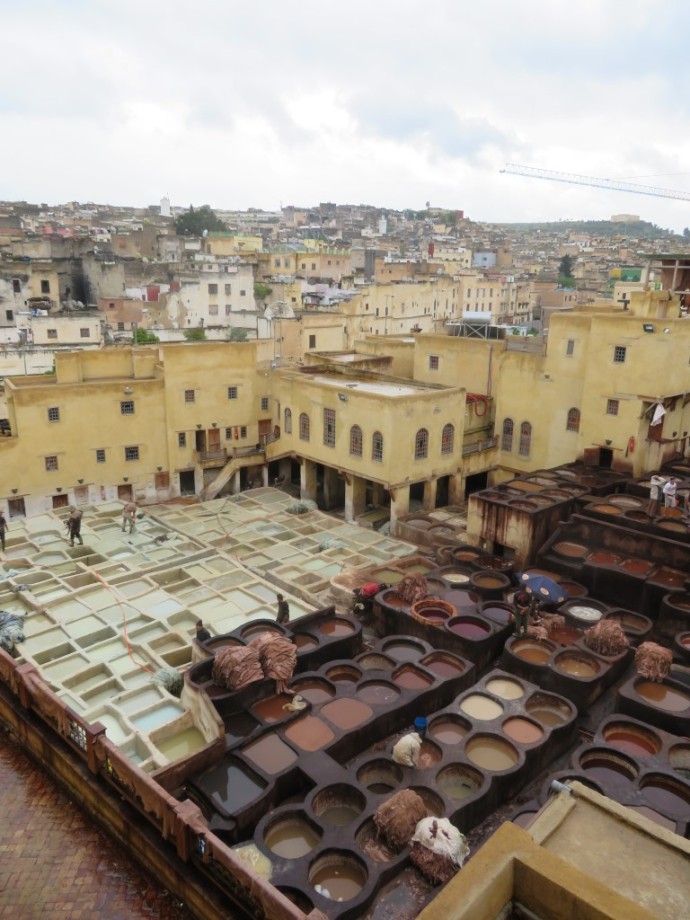
The hides are then soaked into the dyeing water made of all natural products such as poppy for red and henna for orange. Barefoot workers tread the skins in the pits. After the dyeing, they are dried under the sun.
Then they are transformed into beautiful leather goods such as bags, jackets, shoes, wallets and poufs. The production process is completely manual labour and involves no modern machinery and has been more or less the same since the medieval era.
We were taken up to see the views from above and given mint to hold to our noses to combat the smell. The guy showing us around thought it was funny to demonstrate the Moroccan gas mask. The leather goods (camel, cow, sheep and goat) produced in the tanneries are incredible quality and exported around the world.
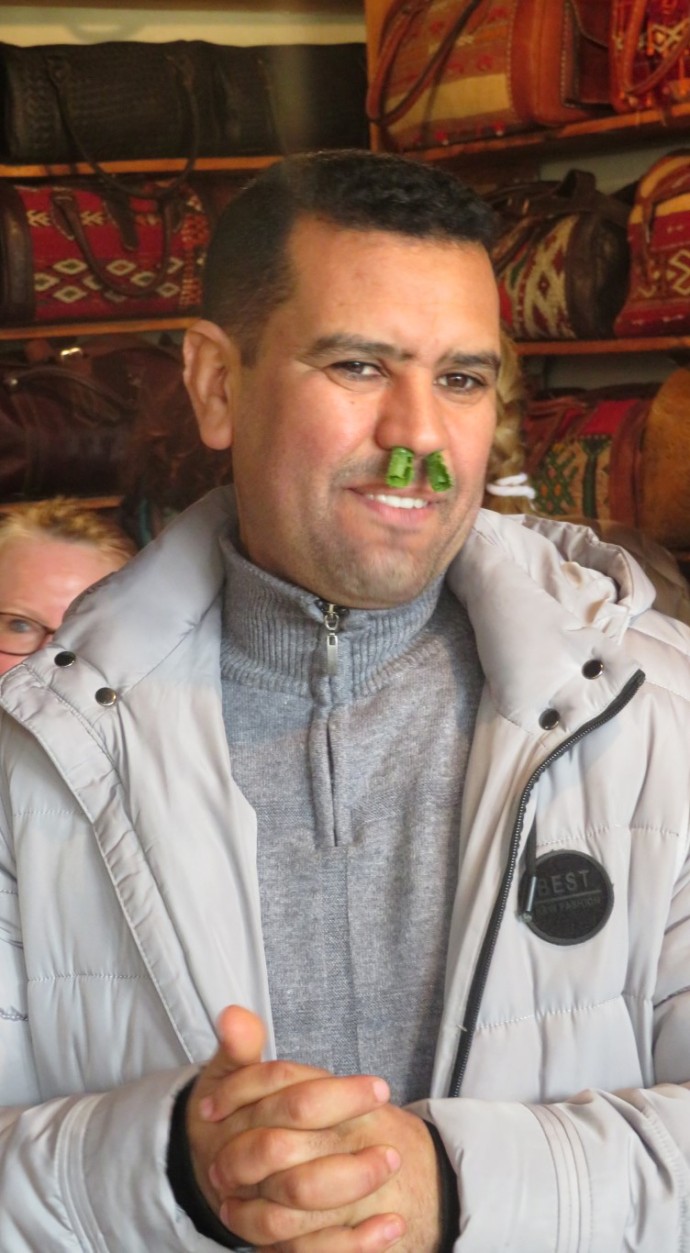
Vibrant, noisy, fascinating and overwhelming, Fes was most definitely a feast for the senses.
